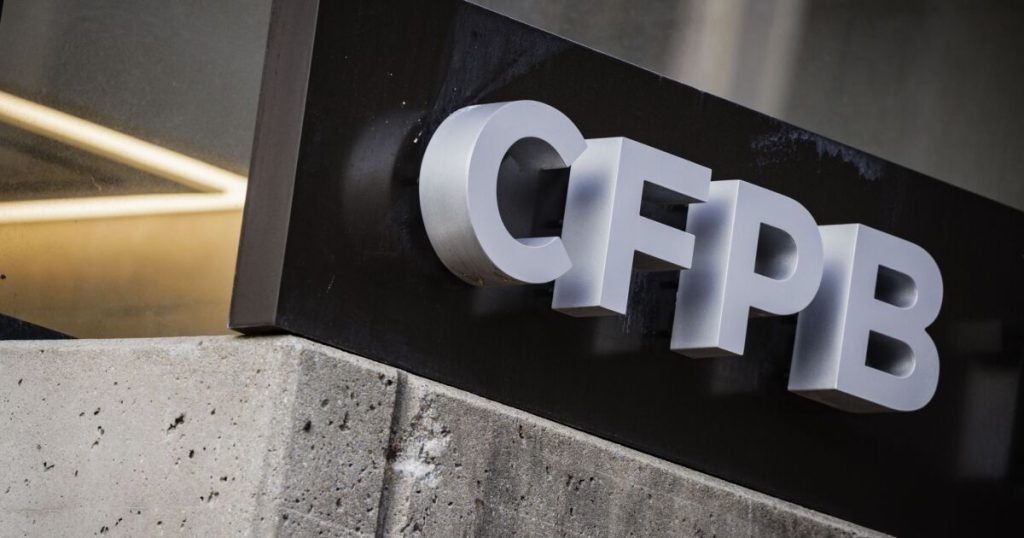The Consumer Financial Protection Bureau is restricting funding for consumer education and financial literacy programs through its civil penalty fund.
In
“The bureau does not intend to exercise its discretionary authority to allocate funds to consumer education and financial literacy programs,” Vought said in the proposal.
The CFPB has funded just one program through the fund — a program established a decade ago to help military veterans and vulnerable consumers. Legal experts said the move likely was designed to hamstring future administrations from tapping the billion-dollar fund.
The proposal would remove any references to allocating funds for education and literacy programs by amending a 2013 rule implementing a provision of the Consumer Financial Protection Act.
The civil penalty fund was created primarily to provide redress or restitution for consumers who have been harmed. But the Dodd-Frank Act also specifically says that the CFPB “may” use the fund for “consumer education and financial literacy programs.” Money in the fund comes from penalties paid by companies and individuals “that broke the law,” the agency says on its website.
Dara Duguay, the CEO of the nonprofit Credit Builders Alliance, a network of 630 nonprofits in 50 states and Puerto Rico, said only Congress can change the statute.
“Congress created the statute and the statutory language only has two allowable uses,” said Duguay. “So I don’t think Russell Vought can change this without Congress changing the statute.”
From 2013 to 2016, the CFPB allocated $28.8 million for consumer education and financial literacy programs, the proposal states.
The bureau has funded just one program that provided financial coaching for military veterans, military widows and widowers, and economically vulnerable consumers to improve their money management skills. The program was funded a decade ago under Holly Petraeus, a former CFPB assistant director who headed the Office of Servicemember Affairs.
Colonel Paul Kantwill, a senior fellow at Loyola University Chicago School of Law and former CFPB assistant director for servicemember affairs, said the cuts to consumer education and financial literacy programs combined with the CFPB’s pullback in supervision and enforcement will “imperil servicemembers, veterans and their families in the financial marketplace.”
“This is especially true if the supervision and enforcement functions are compromised or discontinued,” Kantwill said. “Both of these functions are of critical importance, especially if education is curtailed. I am especially concerned about a potential absence of supervision because supervision provides real-time oversight and has the ability to detect and identify problems immediately and offers the ability to remedy such issues before they can have a potentially catastrophic effect.”
In the 12 years since the CFPB adopted rules for the fund, the agency has paid $3.7 billion to roughly 6.7 million people for redress or restitution for a wrong, injury or loss they suffered by a financial firm.
Jeff Sovern, the Michael Millemann professor of consumer protection law at the University of Maryland Francis King Carey School of Law, said the use of the word “may” indicates that Congress chose to give the CFPB discretion to use funds for education and literacy programs, but it doesn’t have to.
“If the CFPB adopts the proposed amendment, the bureau could not exercise its discretion without amending the rule again, presumably by going through the notice and comment process, which can take a while,” Sovern said. “That seems inconsistent with the statutory permission to exercise discretion. In effect, the proposed rule would not only limit the power of the CFPB during the Trump administration but also during a succeeding administration that felt differently until that administration could amend the rule.”
The billion-dollar civil penalty fund has long been a target of criticism by some Republicans
concerned about the CFPB funding pet projects. Vought claimed that the CFPB’s leadership was given too much latitude on how to allocate the money and could be swayed in bringing enforcement actions in order to amass more money in the fund.
“In the absence of adequate guardrails, there could be incentives to bring enforcement actions for the purpose of aggrandizing the operational scope of the agency,” Vought said in the proposal. “The bureau now believes that the procedures outlined in the rule provide neither adequate guardrails for the agency’s exercise of its discretion nor adequate transparency to the public regarding a potentially significant expenditure.”
The bureau doesn’t publicly disclose the balance of the civil penalty fund, but a
Duguay said she and other nonprofits had urged former CFPB Director Rohit Chopra to provide funding to nonprofits through the penalty fund — but he chose not to do so. The pullback in federal funding by the Trump administration has devastated financial nonprofits’ philanthropy, she said.
“There are people that face creditors or eviction and they need help and if these nonprofits can’t help them navigate that, it’s going to be disastrous,” said Duguay.
The 2010 Congress that enacted Dodd-Frank believed so strongly in financial literacy that it required the CFPB to create an Office of Financial Education, said Sovern, adding that financial firms and their advocates will sometimes oppose regulations on the grounds that expanded consumer education would be more effective than regulation.
“If the CFPB lacks resources to educate consumers, that undermines that industry argument,” Sovern said. “Under this administration, we will end up with unprotected and inadequately educated consumers — which is not what Congress wanted when it created the bureau, not that this administration cares.”
The CFPB is asking for public comment on the proposal even though it is exempt from the notice-and-comment rulemaking requirements of the Administrative Procedure Act. Vought specifically asked for public comments about the costs and benefits of the rule change.

